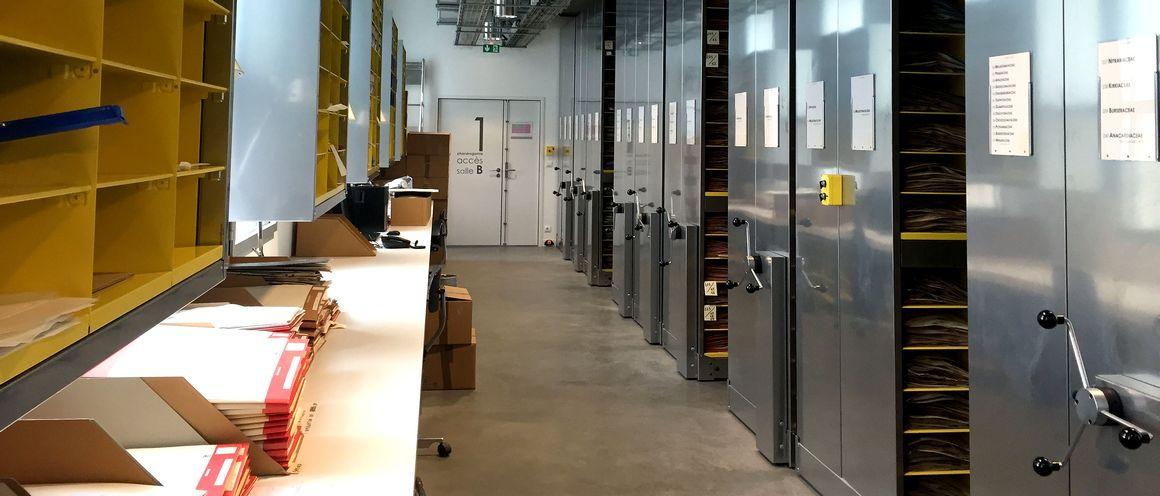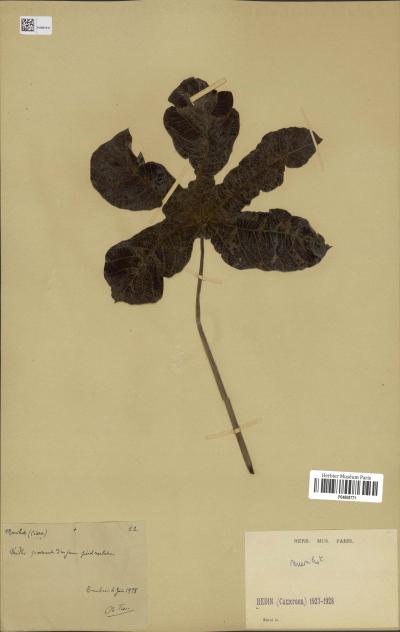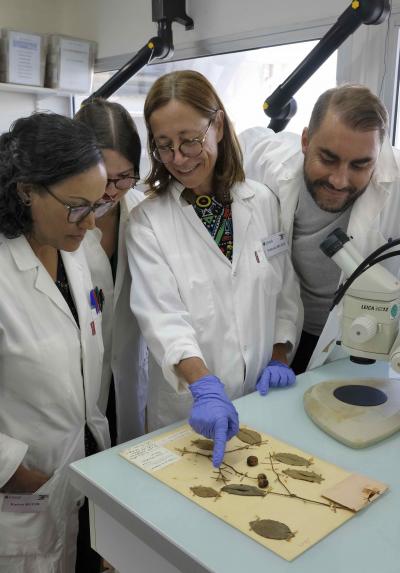Results & impact 10 October 2025
- Home
- Press area
- Press releases
- History cassava virus historical RNA herbarium
Historical RNA has served to trace the evolutionary history of a virus that causes a serious cassava disease

It was in the Museum national d’Histoire naturelle herbarium in Paris that the historical Manihot glaziovii sample with cassava mosaic virus symptoms was discovered © L. Gagnevin, CIRAD
The story began in 2014, when researchers discovered a historical specimen of Manihot glaziovii collected in 1928 in Central African Republic in the herbarium held by the MNHN in Paris. The specimen showed symptoms typical of cassava mosaic virus, one of the most serious diseases affecting the crop in Africa. "Such historical signs of a disease prove the existence of a pathogen on a host plant at a given place and time", says Jean-Michel Lett, a virologist at CIRAD specializing in the history and global diversity of geminiviruses, a family that causes numerous crop diseases including cassava mosaic virus.
The existence of symptoms consistent with a disease on historical specimens is the first clue, which requires molecular testing to confirm the presence of the pathogen. “Although the microbes that were on a plant when it was collected and added to a herbarium are now dead, we can still isolate and sequence nucleic acids", says Nathalie Becker, a teacher-researcher representing the MNHN in Réunion. Several attempts at amplifying viral DNA by PCR (polymerase chain reaction) failed to find any trace of the virus species responsible for cassava mosaic virus in the specimen. “This intrigued us, because the mosaic symptoms and leaf deformations observed on the historical specimen were typical of the disease", Jean-Michel Lett adds. However, there was a possibility that the DNA may have deteriorated naturally over the course of time…
RNA was targeted to identify the virus affecting the herbarium specimen
Researchers from CIRAD and the MNHN then thought of targeting another genetic information carrier, RNA, for two main reasons. Firstly, because a research team led by Jan Kreuze, a Swedish virologist working for the International Potato Center in Peru, had demonstrated the possibility of identifying viral genomes by sequencing small RNA (Ref.). "Small RNAs are produced by plant cells in response to infection with a virus. They can be sequenced to rebuild, indirectly, the viral genomes responsible for the infection", says Adrien Rieux, a genome specialist at CIRAD in Réunion, who is leading an ANR JCJC project to exploit historical DNA from herbaria to understand current crop diseases. In 2014, another research team led by the British anthropologist and virologist Oliver Smith used the method to rebuild the genome of a historical virus affecting barley, using 750-year-old grains! (Ref.)
“This impressive result suggested to us that these small interfering RNAs may, for reasons we don't yet know, persist for many years after a plant dies", Adrien Rieux, the article's lead author, points out. By sequencing such small interfering RNAs from the 1928 cassava specimen, the researchers were able to rebuild almost the entire genome of African Cassava Mosaic Virus (ACMV). After authenticating the newly reconstituted historical ACMV genome by analysing its RNA damage patterns, it was compared phylogenetically with a large dataset representative of the current genetic diversity of the virus in Africa. This allowed the researchers to estimate the speed at which the virus evolved, and to date the existence of the ancestor shared by all African isolates to the 1850s or thereabouts. "This estimate predates those made solely using contemporary specimens isolated in the field by more than a hundred years. It is more consistent with historical records, since the oldest descriptions of the disease date back to 1894 in Tanzania."
Thousands of specimens in herbaria held by natural history museums all over the world have yet to be explored. “The results obtained have once again demonstrated the amazing potential of herbarium specimens for retracing the evolutionary history of crop pathogens, a prerequisite for improving our ability to predict the dynamics of both current and future diseases", Paola Campos, an MNHN PhD student currently working on the topic at CIRAD, concludes.
Reference
Rieux A, Campos P, Duvermy A, Scussel S, Martin D, Gaudeul M, Lefeuvre P, Becker N, Lett JM. Contribution of historical herbarium small RNAs to the reconstruction of a cassava mosaic geminivirus evolutionary history. Nature - Scientific Reports, 2021 https://doi.org/10.1038/s41598-021-00518-w





























